Introduction to permaculture for horse properties
By Mariette van den Berg BAppSc.(Hons), MSc. (Equine Nutrition), RAnNutr.
Certified Permaculture Designer
What is permaculture?
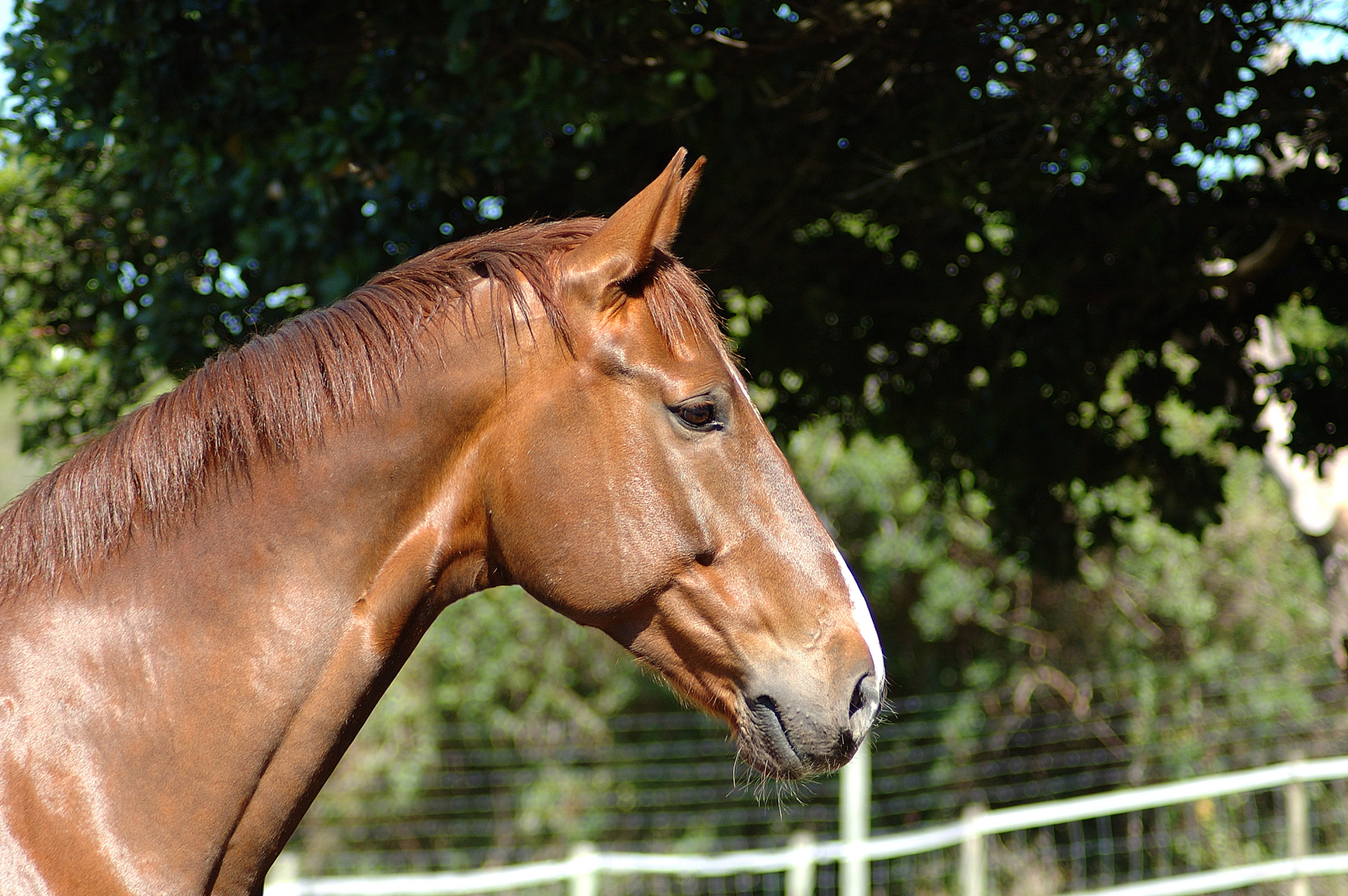 The word permaculture is a blend of PERMAnent agriCULTURE.(1) Permaculture can be defined as the conscious design and maintenance of agriculturally productive ecosystems, which have the diversity, stability, and resilience of natural ecosystems. Permaculture is a philosophy and an approach to land use that weaves together microclimate, annual and perennial plants, animals, soils, water management, and human needs into intensely connected and productive communities.(1,2) The intent is to work with, rather than against, nature; fIntroduction or protracted and thoughtful observation rather than protracted and thoughtless action; for looking at systems in all their functions, rather than asking only one yield of them; and allowing systems to demonstrate their own evolutions.
The word permaculture is a blend of PERMAnent agriCULTURE.(1) Permaculture can be defined as the conscious design and maintenance of agriculturally productive ecosystems, which have the diversity, stability, and resilience of natural ecosystems. Permaculture is a philosophy and an approach to land use that weaves together microclimate, annual and perennial plants, animals, soils, water management, and human needs into intensely connected and productive communities.(1,2) The intent is to work with, rather than against, nature; fIntroduction or protracted and thoughtful observation rather than protracted and thoughtless action; for looking at systems in all their functions, rather than asking only one yield of them; and allowing systems to demonstrate their own evolutions.
The main principle of permaculture is to develop sustainable human settlements, and to preserve and extend natural systems.(1,2) It covers the economic design of human settlements, food production, animal husbandry, water infrastructures, earthworks, and soil development. All of these permaculture principles of design can also be applied to horse properties.
Priority of restoring soils
Permaculture is concerned with the restoration of soil as a priority, because healthy soil produces healthy plants and grasses — which help produce healthy horses!
Within an ecosystem, a number of fundamental processes play a role in the recycling of nutrients: the water cycle, the mineral cycle, the community dynamics (i.e. the relationship between organisms in the ecosystem), and the energy flow. In a natural system, many species of plants and animals play a role in these processes. However, on horse properties, the manager is responsible for overseeing the animals and returning waste (via compost or mulch) to the soil and plants. Actively creating soil in pastures becomes the property owner’s role, whereas in nature many other processes and species carry out that function. In permaculture, the intent is to actively support these fundamental processes by using systems and species that can actively restore soil, providing that they are not locally rampant and invasive.(1,2)
Permaculture for horse properties
Permaculture for equine systems is based on conscious design that focuses on the sustainability of horse keeping, land regeneration, and the well-being of horses. Permaculture as a design system is a call to action: it aims to work towards sustainable solutions. The objective is to produce systems that are ecologically sound and economically viable, which provide for their own needs, do not exploit or pollute, and are there for sustainability in the long term.(1,2)
Using these principles, we can develop sites in such a way that we can also provide niches for a variety of other animals, including livestock such as cattle, goats, and chickens. In the design of horse properties, we can include the following systems: dams and swales; contour fencing; mobile electric fencing for cell grazing (to minimise damage to pastures); lane-way and central point systems; water points; various forage tree and shrub species along field boundaries and divisions for cut-and-carry fodder; early- and late-season green crops; composting systems that make full use of animal manures; and the production of compost tea and bio-fertiliser.
To create a healthy environment for horses, we should have an integrative approach that looks at various aspects, including the environment and behaviour of wild and free-roaming horses in comparison to those of domestic horses, property design strategies, pasture management for diversity, general horse nutrition, shelter, drought-proofing, and integrating horses in ecological terms as soundly as possible.
Soil development
Farming and soil quality
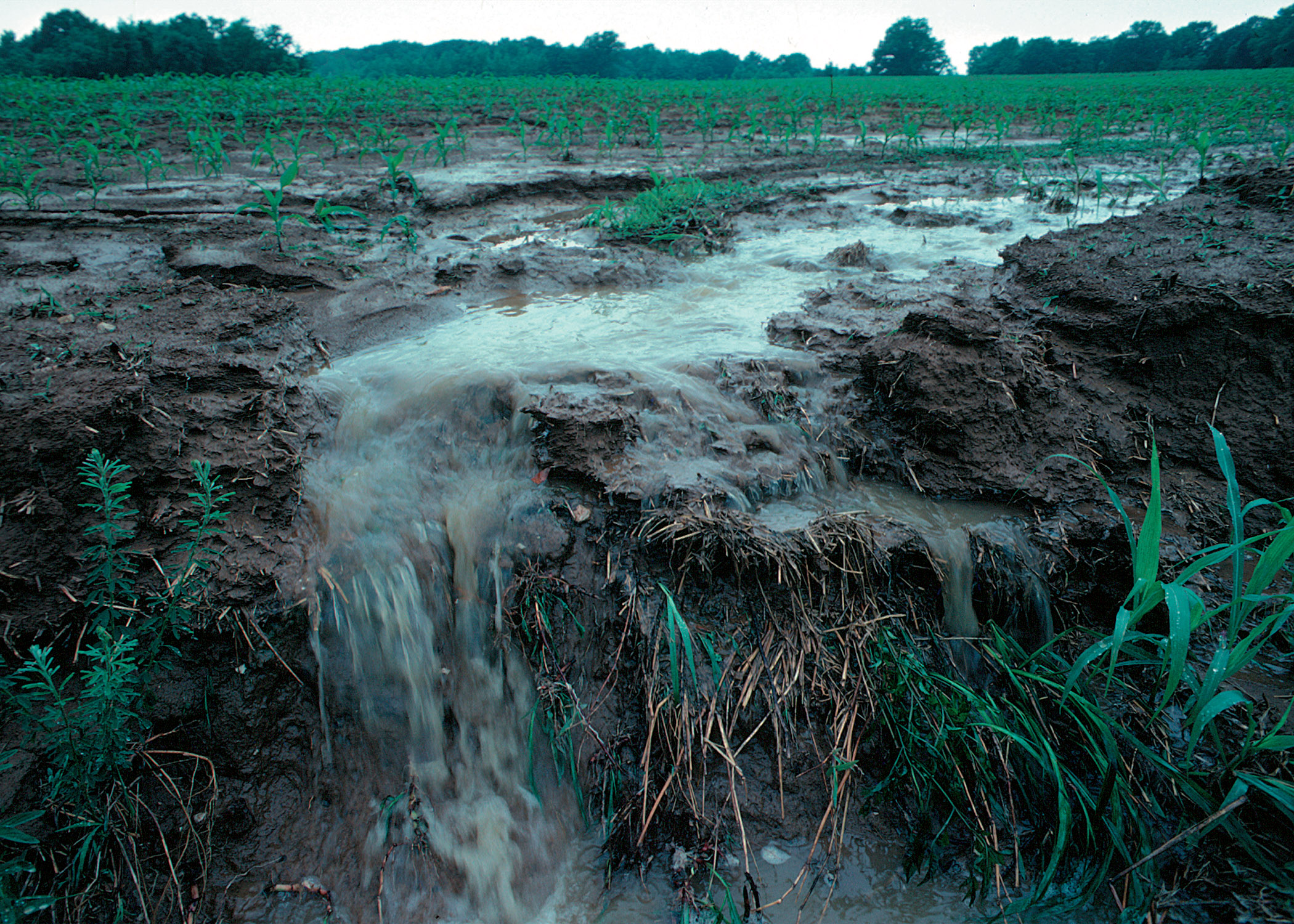
Unprotected farm fields yield topsoil as well as farm fertilizers and other potential pollutants when heavy rains occur.
Over two hundred years ago, pasture management techniques were introduced from Europe and the ‘mother country’, England — landscapes far different from the ones we know in Australia. Other continents, such as Africa and America, also inherited similar approaches to land management.
First, farmers began clearing and ploughing land and draining wetlands to gain more productive land for grazing livestock and crop production. Then, industrialisation and economic growth after World War II resulted in the ‘Green Revolution’ in agriculture. Chemical salt-based fertilisers, herbicides, and pesticides were introduced.(3) These changes had a profound effect on soil quality.
As a result of ploughing, monoculture cropping, and set-stock grazing, oxidation and erosion depleted soil in terms of both quantity and quality (nutrients).(4) Exposed soils were carried out to sea by strong desert winds and run-off. Multinational fertiliser companies started to promote their fertilisers to improve soil and pasture quality. However, these salt-based fertilisers actually reduced soil quality and introduced a new problem: weeds.(5) In order to control weeds, farmers sprayed herbicides at anything that was not the crop or pasture of choice.
Role of weeds in the management of pastures
The reason weeds grow in pasture is that the soil has been poorly managed, with little or no topsoil present at all.(2,6) One way to test soil condition is to locate your most degraded paddock. If you had a shovel, could it penetrate the soil easily? Would you dislodge clay or straight topsoil? Topsoil should be black or dark brown. If the soil is red, for example, it indicates that the topsoil has been stripped away and that the subsoil is exposed. The topsoil layer must be at least 200 mm (approximately 7.85 inches) thick, have structure, and be full of life (e.g. nematodes, arthropods, bacteria, and fungi).(7,8)
The spraying of glyphosphate herbicides, pesticides, and fungicides eliminates much essential life in the soil that grows more soil and looks after plants.(5) By using fungicides, we also deplete the beneficial fungi that break down weeds and other organic matter. Weeds are hyper-accumulators of minerals from the soil, which fungi convert to trace minerals that can be absorbed by plants, and then become available to grazing horses. Along with beneficial microorganisms, fungi form complex associations with the roots of nearly all plants to help them grow.(7-9)
In these ways, chemical (prescription) farming and poor pasture management can lead to poor-quality grasses and cause health problems for horses due to highly toxic anaerobic (oxygen-lacking) soils. This leaves owners with increased costs of buying feed and paying veterinary bills.
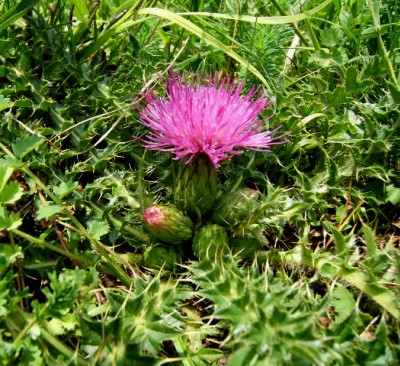 By simply observing a paddock from a distance over time, a trained eye can instantly identify the condition of the soil. It can see what the soil is doing or not doing. For instance, deep tap-rooted weeds like thistles indicate hard and compact soils, whereas fine, shallow surface roots indicate that the soil has no structure and is trying to keep itself together.(10) Rather than destroying weeds, we can use them in pasture as tools to speed up soil-making and fertility in horse pastures. Hence, the role of weeds in a biodynamic pasture system is absolutely essential for successfully fast-tracking the production of healthy soil.(1,2,10)
By simply observing a paddock from a distance over time, a trained eye can instantly identify the condition of the soil. It can see what the soil is doing or not doing. For instance, deep tap-rooted weeds like thistles indicate hard and compact soils, whereas fine, shallow surface roots indicate that the soil has no structure and is trying to keep itself together.(10) Rather than destroying weeds, we can use them in pasture as tools to speed up soil-making and fertility in horse pastures. Hence, the role of weeds in a biodynamic pasture system is absolutely essential for successfully fast-tracking the production of healthy soil.(1,2,10)
By spraying for weeds, what we are doing, in fact, is selecting for weeds. Glyphosphate (a non-selective systemic herbicide), for example, both kills beneficial microorganisms (e.g. rhizobia, manganese-reducers, mycorrhizae) and can stimulate pathogens.(11,12) When beneficial workers are gone, only poor soils with an ineffective nutrient cycle remain. Then, in these soil conditions, only opportunistic plants (weeds) can establish themselves. Relying on herbicides is a clever way to perpetuate the profits of multinational companies that produce and sell these products (not to mention maximising sale tax revenue for governments), but it is not a sustainable way to manage our properties and save money.(5) Apart from glyphosphate’s high salt content, commercial formulations of glyphosphate contains surfactants, which vary in nature and concentration. Imagine what this could be doing to our horses’ health or even our own.(12)
Weeds are non-native, or immigrant, species — and hardworking ones at that. Many in permaculture now understand that, once a native landscape has been pushed past the point where it cannot repair itself (such as today’s landscape), hardworking immigrants (weeds) are required to fill the niche.(2,10) Building soil by encouraging the breakdown of organic material, including weeds high in accumulated minerals, is a natural means of restoring horse pasture health.
Soil improvement
When practising pasture management, it is not the vegetation that is replenished but the soil. The best means to achieve this is to replicate naturally occurring nutrient cycles: we need to feed the soil through a process of breaking down organic matter with soil microorganisms, bacteria, and fungi.(7,9) In a natural system, many species of plants and animals play a role in these processes. However, on farming land, it is the manager’s responsibility to oversee the animals and return waste (via compost or mulch) to the soil and plants.
Plants form associations with soil biology to trade food.(7,8) The plant produces food (simple sugars) through the process of photosynthesis, which is made available at the end of the root tip. The sugars from the roots are exchanged with symbiotic fungi (mycorrhiza) for essential nutrients, minerals, and even water. Plants send out chemical signals to fungi that they require magnesium, an element essential for plant growth. Fungi networks — chains of microscopic mycelium (fungi) strands that have been recorded at lengths and depths of approximately 10 kilometres (6.21 miles), can search out the required nutrient and deliver it to the plant in exchange for the food that the fungi need: carbohydrates.(9)
When most people think of fungi, they think of mushrooms. They also tend to think of fungi as plants. A characteristic of plants is that they inhale carbon dioxide (CO2) and exhale oxygen (O2). Fungi actually breathe in oxygen (O2) and exhale CO2 like humans. Interestingly, fungi have survived two mass extinctions over 65 million years, and the only plants that also survived these extinctions are the ones that formed associations with fungi.9 From this, we can easily understand the health implications of not correctly managing soil and the life it contains.
One of the most difficult aspects of teaching people about working with natural systems and improving pasture health is that permaculture is a way of thinking. It is not a product, something that can be bought off the shelf from the local rural supplier, spread, sprayed, or watered. The difference is that, once natural health has been allowed to return through interaction in the soil food web (as illustrated in figure 1), natural balance can be restored. Natural systems are the only science recognised by nature. All over the world, when natural systems are disregarded, the land suffers, and in the long-term, attracts high costs.
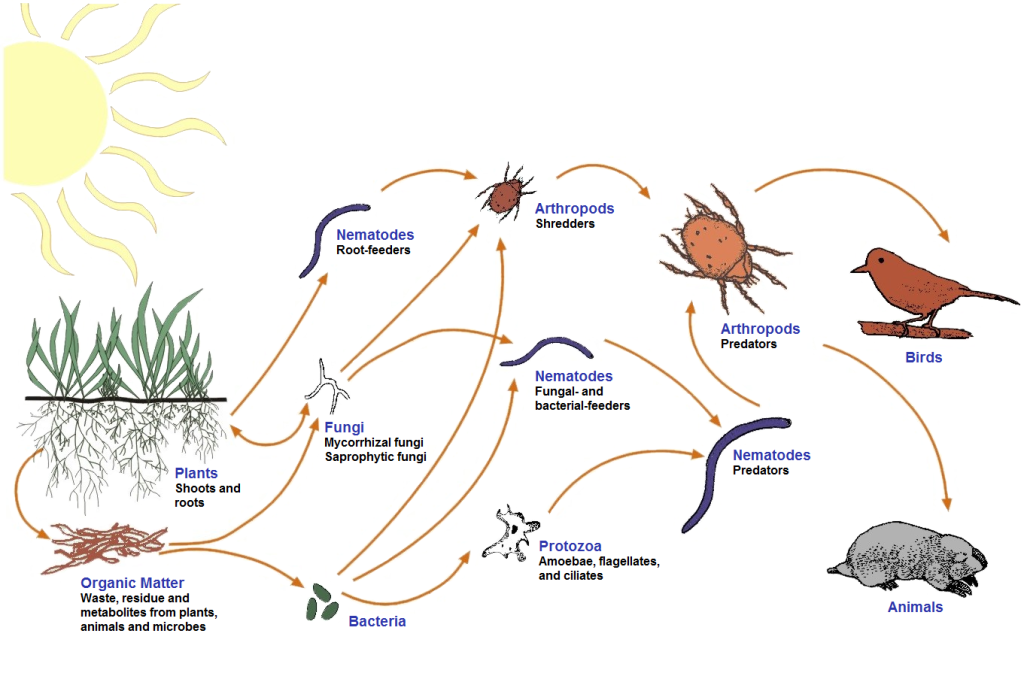
Figure 1. Soil biology. USDA Natural Resources Conservation Service
Compost techniques
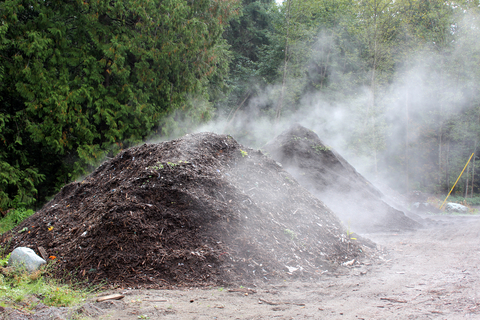 Many soil tests from horse properties show that the soils are deficient in nitrogen. One conventional method to combat nitrogen deficiency is to utilise High (N) Fertilisers. These products are generally expensive, and the success of their application varies, especially in the long term. Importing soil improvers starts a cycle of dependency on prescription farming and high costs.
Many soil tests from horse properties show that the soils are deficient in nitrogen. One conventional method to combat nitrogen deficiency is to utilise High (N) Fertilisers. These products are generally expensive, and the success of their application varies, especially in the long term. Importing soil improvers starts a cycle of dependency on prescription farming and high costs.
What if there were a way to take everything that a property or equestrian centre could provide naturally and turn it into potent fertiliser? Not only is this possible, but it can also be implemented in a short period of time and drastically reduce costs by bypassing expensive soil improvement products that do not safeguard or promote soil biology.
Compost is made using the waste products of our animals’ manure, stable bedding, weeds from paddocks, lawn clippings, and other household waste such as food scraps and paper. Anything that was once living can be composted. These are mixed into a pile of around 2 cubic metres (6.5 feet) — just like making a cake.
Hot composting
A number of methods are available for composting organic waste, such as passive composting and hot (turning) composting.(13) Both systems have advantages and disadvantages.
Passive composting involves stacking the materials into piles to decompose over a long period of time with little disturbance and management. This process is often used for composting animal wastes. However, the simple placing of manure in a pile does not satisfy the requirements for continuous aerobic (with oxygen) composting. Without considerable bedding material, the moisture content of manure exceeds the level that enables an open porous structure to exist in the pile. Little, if any, air passes through. Under these circumstances, anaerobic microorganisms dominate the degradation process and all of the undesirable effects associated with anaerobic degradation can occur.
Passive composting can work for small horse farms (from one to five horses) that do not have a tractor to turn the piles or are not able to turn them on a regular basis. This method involves forming small piles of manure, approximately 5–7 feet (1.5–2 metres) at the base and 3–4 feet (about 1 metre) in height, and leaving them mostly undisturbed until the matter has decomposed into a stabilised product. Small piles can take some advantage of natural air movement. There are different techniques available that use aerobic composting through passive aeration. Another way to passively compost is by adding farm wastes (such as straw, vegetable refuse, weeds, and water) to the manure pile and placing punctured PVC tubes in the middle of the pile so that air can move through to the centre.
 However, good quality compost that is free of pathogens is more likely to result from hot and turning (aerobic) composting techniques, because they use temperature measurements to monitor the process. Hot composting also fast-tracks the breaking down of organic matter. For example, the Berkeley Method of hot composting (developed at the University of Berkeley, USA) is based on turning the compost pile regularly to encourage aerobic processes and heating the pile with a balanced mixture of high nitrogen items (such as lawn clippings or manures) balanced with carbon (straw or paper).(13)
However, good quality compost that is free of pathogens is more likely to result from hot and turning (aerobic) composting techniques, because they use temperature measurements to monitor the process. Hot composting also fast-tracks the breaking down of organic matter. For example, the Berkeley Method of hot composting (developed at the University of Berkeley, USA) is based on turning the compost pile regularly to encourage aerobic processes and heating the pile with a balanced mixture of high nitrogen items (such as lawn clippings or manures) balanced with carbon (straw or paper).(13)
The biology present heats up the pile and eats and breaks down organic matter, bringing the temperature to an ideal range of 55° to 65° Celsius (131° to 149° Fahrenheit), which kills detrimental pathogens in the animal manures and weed seeds.
Temperature is critical in this process. By turning the pile when it reaches 65° Celsius, it is possible to generate highly fertile soil-building compost that is rich and abundant with every element required by the soil to grow, replete with soil microbes and fungi — in fewer than 28 days.
Compost tea
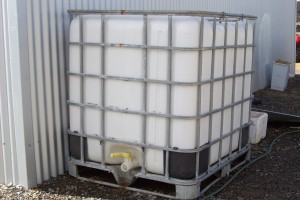 Aerobic composting can be supplemented with an additional practice: the making of ‘compost tea’. Compost tea is a liquid produced by extracting bacteria, fungi, protozoa, and nematodes from compost. Compost tea production is a brewing process that is as simple to master as making a home brew.(14)
Aerobic composting can be supplemented with an additional practice: the making of ‘compost tea’. Compost tea is a liquid produced by extracting bacteria, fungi, protozoa, and nematodes from compost. Compost tea production is a brewing process that is as simple to master as making a home brew.(14)
For making a compost tea, the compost to water ratios reported in the literature varied from 1-3 kg (4.4-6.6 pounds) of compost in 75 liter water (20 gallons) to 9-10 kg (20-22 pounds) of compost in 200 to 400 liters (53-106 gallons) (15,16). A simple way of producing the tea is to use a 1000-liter (264-gallon) tea brewer, which enables compost to be soaked in water for 24 hours in a brewer bag while air bubbles pass through at a high rate. This separates the ‘soil biology’ from the compost, and attaches it to the highly oxygenated water, producing a liquid fertiliser ready to be applied to soils. The same results cannot be achieved by placing manure into still water. In fact, this is dangerous in that it breeds detrimental anaerobic bacteria that can be harmful to humans and animals. Aerobic organisms are the most beneficial because they promote the processes that a plant needs in order to grow without stress and with a greater resistance to disease. To ensure a community of beneficial organisms, the compost tea must remain aerobic.(14)
When compost tea is brewed in the correct way, horse owners can achieve sustainable systems, generate healthy soils, improve pastures, and reduce costs in the process. Some owners may even make money from compost tea. A biologically rich ‘Inoculum Compost’ can be sold for a very good price to other horse property owners, equestrian facilities, and local organic/biodynamic gardeners and farmers.
However, compost tea brewing does require some input and may not be feasible for every horse owner (especially on smaller horse farms). In this case, tea can be purchased from commercial or local brewers in the area.
Bio-fertiliser
Over the last twenty years, pioneering scientists in Latin America have been developing a range of ‘farm-made’ bio-fertilisers to replace energy-intensive and expensive artificial fertilisers.(17) These techniques are based on the principle of trophobiosis. Trophobiosis (from the Greek, tropho = nourishment and biosis = life) is based on the relationship between the nutritional status of plants and their parasites. Frenchman Francis Chaboussou pioneered the concept in the 1960s. His theory was that the application of pesticides makes crops more susceptible to further pest attack. Hence, chemical-based farming creates a cycle of increasing dependence on pesticides.(5,18)
Bio-fertiliser is a ferment that can be made from various ingredients, such as fresh cow dung or rumen contents, dissolved in water, and enriched with whey or milk, molasses, bone and wood ash, and rock dust.17 We can also include mineral salts, such as sulphates, or oxides of magnesium, zinc, copper, and more. The brew is fermented for several months in an anaerobic process. The final solution contains chelated minerals, biocatalysts, and microorganisms.
Bio-fertilisers contain myriad living compounds and minerals that are soluble. The most important ingredient is the microorganism lactobacillus, which is found in the digestive tract of cows. These bacteria are very good at extracting minerals from organic matter.
Further reading:
- Mollison, B. 2011. Introduction to Permaculture. 2nd edition. Tagari Publications, Australia
- Mollison, B. 2004. Permaculture; A Designers’ Manual. 2nd edition. Tagari Publications, Australia.
- Gaud, W. S. 1968. The Green Revolution: Accomplishments and Apprehensions. AgBioWorld. Retrieved 8 August 2011.
- Savory, A. & Butterfield, J. 1999. Holistic Management -A new Framework for Decision Making. 2nd edition. Island Press, Washington, DC, USA.
- Chaboussou, F. 2004. Healthy Plants, A New Agricultural Revolution, Jon Carpenter, Charlbury, UK.
- Dale, H. M. 1966. Weed complexes on abandoned pastures as indicators of site characteristics. Canadian Journal of Botany. 44: 11-17.
- Ingham, E. The Soil & Foliar Foodwebs. Soil Food International (www.soilfoodweb.com.au).
- Soil and Water Conservation Society (SWCS). 2000. Soil Biology Primer. Rev. ed. Ankeny; Soil and Water Conservation Society, Iowa USA.
- Stamets. P. 2005. Mycelium running: how mushrooms can help save the world. Ten Speed Press, Berkeley, California USA.
- Pfeiffer, E. E. 2012. Weeds and what they tell. 96 pp. 3rd edition. Biodynamic Farming and Gardening Assoc., Springfield, IL, USA.
- Yamada T. Kremer R.J. De Carmargo e Castro, P.R. and Wood B.W. 2009. Glyphosate interactions with physiology, nutrition, and diseases of plants: threats to agricultural sustainability? European Journal of Agronomy 31; 111-113
- Johal G.S. and Huber D.M. 2009. Glyphosate effects on diseases of plants. European Journal of Agronomy, 31; 144-152.
- Mirsa, R.V., Roy, R.N. and Hiraoka, H. 2003. On-Farm Composting Methods. Food and Agriculture Organization of the United Nations (FAO), Rome.
- Ingham, E. The Compost Tea Brewing Manual. 5th edition. Soil Food International (www.soilfoodweb.com.au).
- Ingham, E. 1999. What is compost tea? Part 1. BioCycle 40 (3), pp74-75.
- Anonymous. 1996. Compost teas in agriculture. BioCycle 37(12), pp 65.
- Gras, E. 2013. Bio-fertilisers. MasHumus (www.mashumus.com).
- Paull, J. 2007, Trophobiosis Theory: A pest starves on a healthy plant. Elementals – Journal of Bio-Dynamics Tasmania, 88, 20-24.
© MB Equine Services 2014
www.mbequineservices.com
